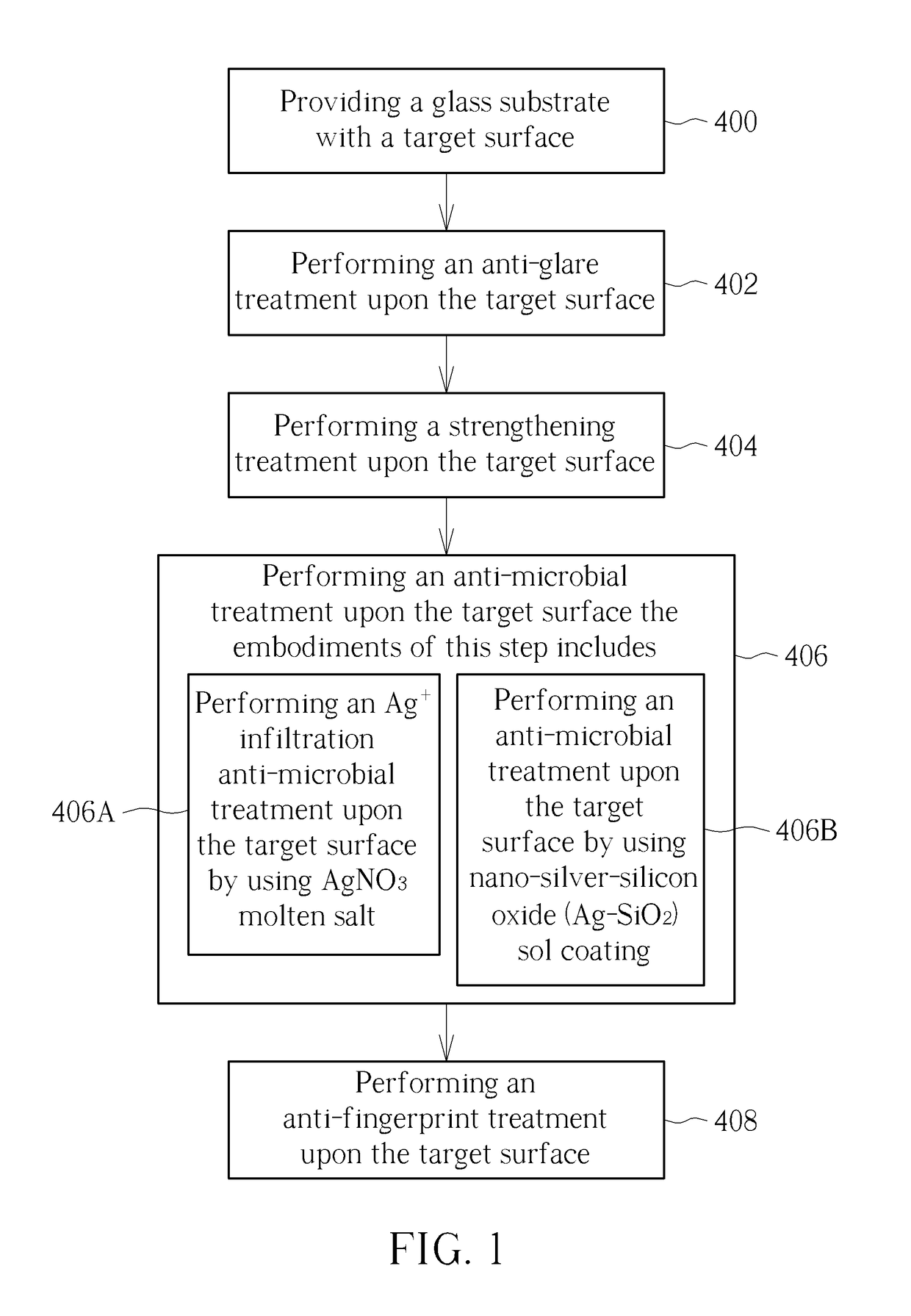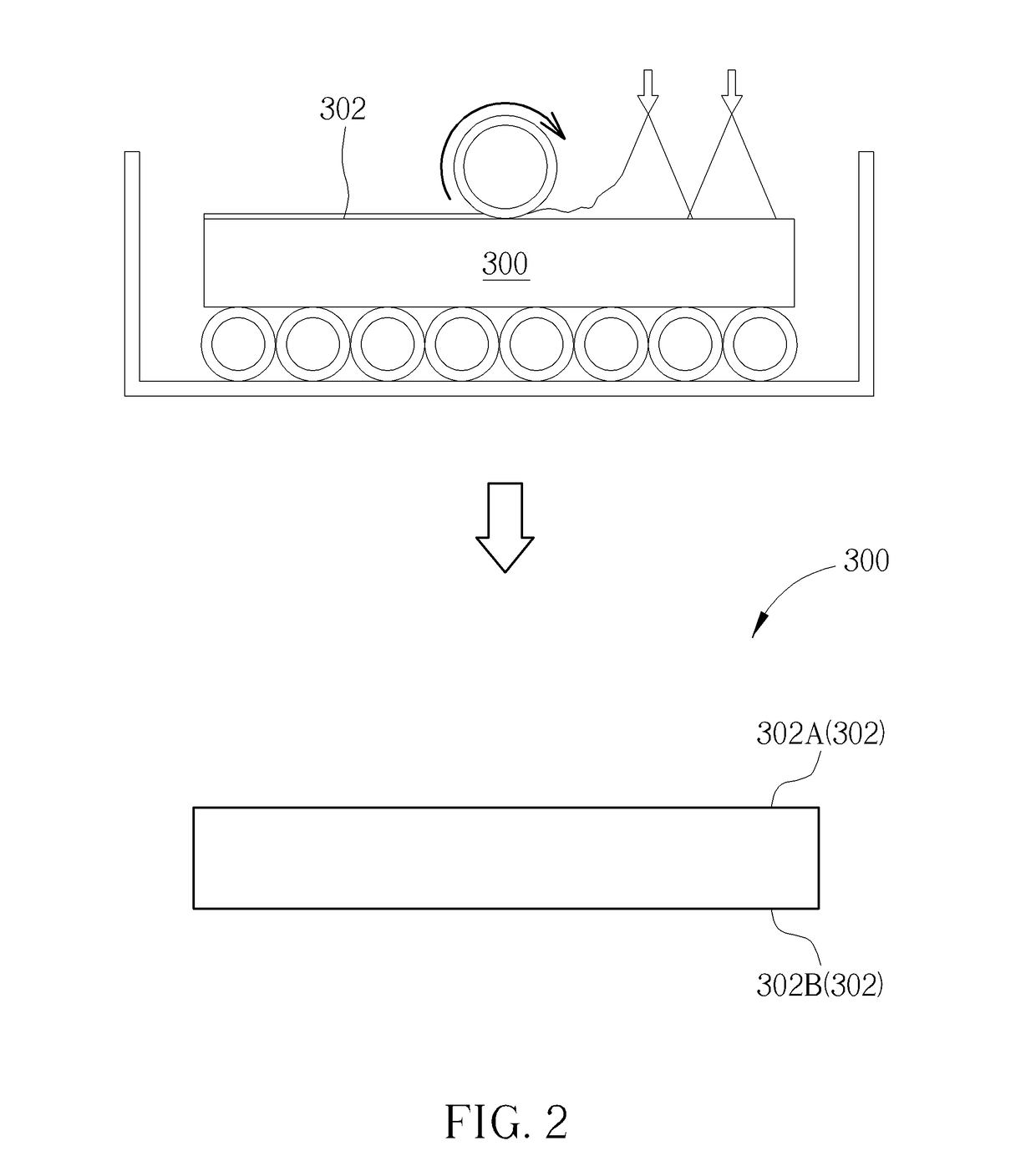Method of fabricating an Anti-glare, strengthened, Anti-microbial and antifingerprint strengthened glass
a technology of anti-microbial and anti-fingerprint, which is applied in the direction of coatings, etc., can solve the problems of poor panel visual effects, contamination and infection of follow-up users, and poor anti-glare, and achieve good anti-glare, anti-microbial and anti-fingerprint capabilities.
- Summary
- Abstract
- Description
- Claims
- Application Information
AI Technical Summary
Benefits of technology
Problems solved by technology
Method used
Image
Examples
example 1
[0037]A method of manufacturing a glass with anti-glare capability.
[0038]An anti-glare glass of example 1 is manufactured by performing a glass etched anti-glare roughening process with HF mixed acid. The formulation of HF mixed acid of the present invention has two characteristics: (1) if the concentration of any ingredient used in the formulation is 0, the ingredient may not be used. Therefore, hydrofluoric acid (HF) may not be used in the formulations 1 to 4 to make the process preparation and use safer; (2) a fluorine surfactant in a concentration of 100 ppm is added into the formulation of the HF mixed acid to manufacture an anti-glare rough surface layer having good quality and easy to control by performing a glass etching process. The formulations of HF mixed acid used in the present invention are listed in Table 1.
TABLE 1formulation of HF mixed acidformulationingredient123456Hydrofluoric acid (49 wt %)%0~50~50~53~54~6sulfuric acid (98 wt %)%15~3510~2010~150~5hydrochloric aci...
example 2
[0049]High efficiency anti-glare anti-microbial anti-fingerprint strengthened glass production.
[0050]A glass etched roughening process is performed by using HF mixed acid to manufacture an anti-glare glass. The quality of the anti-glare glass is shown in Table 1 and the anti-glare effects of anti-glare glass are shown in Table 2. The anti-glare glass of the present example is manufactured by using formula 1 of HF mixed acid.
[0051]A chemical strengthening treatment is performed by immersing the glass in the KNO3 at a temperature of 400 to 450° C. for 3 to 5 hours to manufacture a glass with anti-glare, strengthened capabilities.
[0052]First, nano-silver-silicon oxide (Ag—SiO2) sol is prepared. Next, an anti-glare strengthened glass optical coating is performed to manufacture a high efficiency anti-glare anti-microbial glass, wherein the thickness of the coating is ¼λ, λ=550 nm. The formulations of the Ag—SiO2 sol are listed in Table 6. SiO2 mixed sol is produced by using nano-silver-s...
PUM
| Property | Measurement | Unit |
|---|---|---|
| thickness | aaaaa | aaaaa |
| temperature | aaaaa | aaaaa |
| temperature | aaaaa | aaaaa |
Abstract
Description
Claims
Application Information
 Login to View More
Login to View More - R&D
- Intellectual Property
- Life Sciences
- Materials
- Tech Scout
- Unparalleled Data Quality
- Higher Quality Content
- 60% Fewer Hallucinations
Browse by: Latest US Patents, China's latest patents, Technical Efficacy Thesaurus, Application Domain, Technology Topic, Popular Technical Reports.
© 2025 PatSnap. All rights reserved.Legal|Privacy policy|Modern Slavery Act Transparency Statement|Sitemap|About US| Contact US: help@patsnap.com



